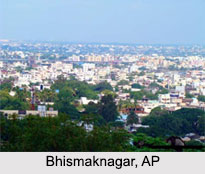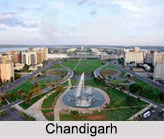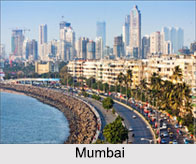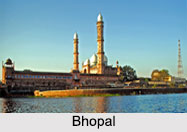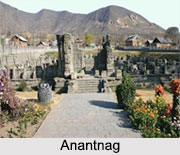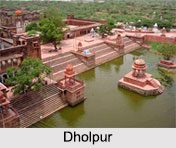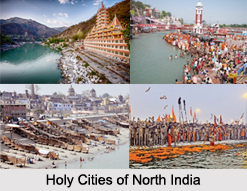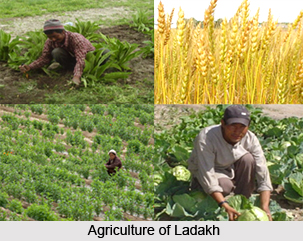 Agriculture of Ladakh has enabled the land to bear a self sufficient agrarian economy. Located at the western end of the Tibetan Plateau and tucked north of the Himalaya between Tibet and Kashmir, the agriculture of Ladakh is inseparable from the social and bouldery structure of the villages. The climate of Ladakh is basically harsh because of the long living winter that is devoid of rainfall. As a result the land of Ladakh is treeless and seemingly barren, with crazily canted rocky slopes. The fields in Ladakh territory are mostly terraced, built with elegant stone walls, and most skillfully arranged. The fields that are prepared for agriculture are mostly miniature lands and are not suitable for broad scale agriculture. The agriculture of Ladakh is predominantly dependent on irrigation. Sometimes, channels are prepared to get water for agriculture. At the fields, little soil dams in the drains are created or breached using long handled spades to distribute the water in a gentle and even flow.
Agriculture of Ladakh has enabled the land to bear a self sufficient agrarian economy. Located at the western end of the Tibetan Plateau and tucked north of the Himalaya between Tibet and Kashmir, the agriculture of Ladakh is inseparable from the social and bouldery structure of the villages. The climate of Ladakh is basically harsh because of the long living winter that is devoid of rainfall. As a result the land of Ladakh is treeless and seemingly barren, with crazily canted rocky slopes. The fields in Ladakh territory are mostly terraced, built with elegant stone walls, and most skillfully arranged. The fields that are prepared for agriculture are mostly miniature lands and are not suitable for broad scale agriculture. The agriculture of Ladakh is predominantly dependent on irrigation. Sometimes, channels are prepared to get water for agriculture. At the fields, little soil dams in the drains are created or breached using long handled spades to distribute the water in a gentle and even flow.
The water for agriculture of Ladakh comes from the Indus, which runs low in March and April when barley-fields have the greatest need for irrigation. The staple crop of Ladakh is barley and in some areas wheat, peas, vegetables and mustard for oil are also cultivated. Crops are grown in summer and the gleaming green view of the fields sets a perceivable contrast to the bare stony area. Roasted barley meal (ngamphe) is the main diet and barley is acidified to produce the alcoholic `chang` that is a must for all celebrations. Centuries of plant breeding have produced superbly adapted local varieties. The emphasis in Igu-Phey is being laid on the cultivation of fodder crops, principally the indigenous ol (lucerne), which takes most of its water in June, when Indus water is plentiful. The Igu-Phey canal doubles up as the water-supply for the three-megawatt Igu-Martselang hydroelectric project. Apart from these projects, some smaller projects were taken for the development of water resources. Even irrigation potential has been created over an area of nearly 5000 hectares, through the construction of canals and water-harvesting tanks. Some of the non-official agencies had also undertaken integrated development schemes in limited areas, involving the application of modern appropriate technologies including hydraulic ram pumps and solar pumps. In spite of the established excellence of Ladakhi crop agriculture official policy has confirmed to improve it by the use of chemical fertilizers and the introduction of high-yielding varieties of crops. Presently, in Leh the total cropped area is about 17,000 hectares.
The area under high-yielding varieties (HYV) i.e. hybrid varieties introduced from outside. Most of the lands are accounted for by wheat, and the balance by grim and vegetables. In Kargil too the success of the HYV programme has been mainly in wheat. Considering the several varieties of barley already available in the two districts, their characteristics varying subtly according to micro-local conditions. Some of the organizations have been providing information and awareness-raising programmes for farmers, laying emphasis on the problems associated with high-tech agriculture as well as the excellence of the existing methods, and suggesting only those improvements that seem to be compatible with traditional systems.
Though the scope for forestry is limited, whatever plantation has been done along roads and river-banks and wherever the administration owns a patch of irrigated land. These lands had been confined to the traditionally grown trees, poplar and willow. The apricot programme is another example of development building. Dried apricots are Ladakh`s only cash crop and since the 1970s, the district administrations have devoted a lot of attention to the fruit, experimenting with new strains and new methods of grafting, as well as with improved methods of drying it. The area under apricot orchards is also being expanded, especially in the Kargil district. As agriculture is inseparable from livestock rearing, the administration had concentrated on improving the local breeds of livestock, apart from increasing fodder production.
Moreover, in some places between the fields, mini meadows filled with grasses and herbs are grown. Apart from cultivating vegetation, the Ladakhis grow willow and poplar trees, along with some fruit and nut trees at lower altitudes. The willy nilly scattered and meager wild plants are used for fuel, fibre and labour.
